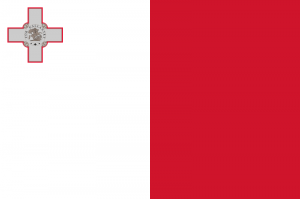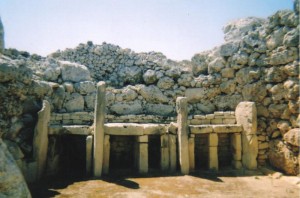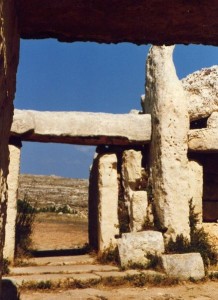Malta

Destination Malta
Destination: Malta. Written, Directed & Narrated by Roger Worrod.
Malta ![]() i/ˈmɒltə/ (Maltese: Repubblika ta’ Malta, pronounced [rɛˈpʊbb.lɪ.kɐ ˈtɐ ˈmɐl.tɐ]) is a southern European country in the Mediterranean Sea. It lies 80 km (50 mi) south of Sicily, 284 km (176 mi) east of Tunisia and 333 km (207 mi) north of Libya. The country covers just over 316 km2 (122 sq mi), making it one of the world’s smallest and most densely populated countries. The capital of Malta is Valletta which is also the smallest capital in the EU at 0.8 km2. Malta has two official languages: Maltese and English.
i/ˈmɒltə/ (Maltese: Repubblika ta’ Malta, pronounced [rɛˈpʊbb.lɪ.kɐ ˈtɐ ˈmɐl.tɐ]) is a southern European country in the Mediterranean Sea. It lies 80 km (50 mi) south of Sicily, 284 km (176 mi) east of Tunisia and 333 km (207 mi) north of Libya. The country covers just over 316 km2 (122 sq mi), making it one of the world’s smallest and most densely populated countries. The capital of Malta is Valletta which is also the smallest capital in the EU at 0.8 km2. Malta has two official languages: Maltese and English.
Malta’s location as a naval base has given it great strategic importance throughout history, and a succession of powers including the Phoenicians, Romans, Moorish,Normans, Aragonese, Habsburg Spain, Knights of St. John, French and the British ruled the islands. Malta gained independence from the United Kingdom in 1964 and became a republic in 1974. Malta was admitted to the United Nations in 1964 and to the European Union in 2004; in 2008, it became part of the eurozone.
Malta has a long Christian legacy and is an Apostolic see. According to the Acts of the Apostles, St. Paul was shipwrecked on Malta. Catholicism is the officialreligion in Malta.
Malta is a favoured tourist destination with its warm climate, numerous recreational areas, architectural and historical monuments, including nine UNESCO World Heritage Sites – Hal Saflieni Hypogeum, Valletta and seven Megalithic Temples which are some of the oldest free-standing structures in the world.
Etymology
The origin of the term Malta is uncertain, and the modern-day variation derives from the Maltese language. The most common etymology is that the word Malta derives from the Greek word μέλι (meli), “honey.” The Greeks called the island Μελίτη (Melitē) meaning “honey-sweet” (which was also the name of a Nereid), possibly due to Malta’s unique production of honey; an endemic species of bee lives on the island, giving it the popular nickname the “land of honey.” The Romans went on to call the island Melita, which is the latinisation of the Greek Μελίτη. Another theory suggests that the word Malta comes from the Phoenician wordMaleth meaning “a haven” in reference to Malta’s many bays and coves. The current term Malta was introduced during the Kingdom of Sicily period.
History of Malta and Timeline of Maltese History
Prehistory – Megalithic Temples of Malta, Hypogeum of Ħal-Saflieni, and Għar Dalam
Pottery found by archaeologists at Skorba resembles that found in Italy, and suggests that the Maltese islands were first settled in 5200 BC mainly by stone age hunters or farmers who had arrived from the larger island of Sicily, possibly the Sicani. The extinction of the dwarf hippos and dwarf elephants has been linked to the earliest arrival of humans on Malta. Prehistoric farming settlements dating to Early Neolithic period were discovered in open areas and also in caves, such as Għar Dalam.
The Sicani were the only tribe known to have inhabited the island at this time and are generally regarded as related to the Iberians. The population on Malta grew cereals, raised domestic livestock and, in common with other ancient Mediterranean cultures, worshiped a fertility figure represented in Maltese prehistoric artifacts exhibiting the proportions seen in similar statuettes, including the Venus of Willendorf.
 Ġgantija megalithic temple complex
Ġgantija megalithic temple complex
 The temple complex of Mnajdra
The temple complex of Mnajdra
Pottery from the Għar Dalam phase is similar to pottery found in Agrigento, Sicily. A culture of megalithic temple builders then either supplanted or arose from this early period. During 3500 BC, these people built some of the oldest existing, free-standing structures in the world in the form of the megalithic Ġgantija temples on Gozo; other early temples include those at Ħaġar Qim and Mnajdra.
The temples have distinctive architecture, typically a complex trefoil design, and were used from 4000 to 2500 BC. Animal bones and a knife found behind a removable altar stone suggest that temple rituals included animal sacrifice. Tentative information suggests that the sacrifices were made to the goddess of fertility, whose statue is now in the National Museum of Archaeology in Valletta. The culture apparently disappeared from the Maltese Islands around 2500 BC. Archaeologists speculate that the temple builders fell victim to famine or disease.
Another interesting archaeological feature of the Maltese islands often attributed to these ancient builders, are equidistant uniform grooves dubbed “cart tracks” or “cart ruts” which can be found in several locations throughout the islands with the most prominent being those found in an area of Malta named “Clapham Junction”. These may have been caused by wooden-wheeled carts eroding soft limestone.
After 2500 BC, the Maltese Islands were depopulated for several decades until the arrival of a new influx of Bronze Age immigrants, a culture that cremated its dead and introduced smaller megalithic structures called dolmens to Malta. In most cases there are small chambers here, with the cover made of a large slab placed on upright stones. They are claimed to belong to a population certainly different from that which built the previous megalithic temples. It is presumed the population arrived from Sicily because of the similarity of Maltese dolmens to some small constructions found in the largest island of the Mediterranean sea.
Magna Graecia, Phoenicia, Ancient Rome, Sicilia (Roman province), and Byzantine Empire
Phoenician traders, who used the islands as a stop on their trade routes from the eastern Mediterranean to Cornwall, joined the natives on the island. The Phoenicians inhabited the area now known as Mdina, and its surrounding town of Rabat, which they called Maleth. The Romans, who also lived in Mdina, referred to it (and the island) as Melita.
After the fall of Phoenicia in 332 BC, the area came under the control of Carthage, a former Phoenician colony. During this time the people on Malta mainly cultivated olives and carobs, and produced textiles.
During the First Punic War of 264 BC, tensions led the Maltese people to rebel against Carthage and turn control of their garrison over to the Roman consul Sempronius. Malta remained loyal to Rome during the Second Punic War and the Romans rewarded it with the title Foederata Civitas, a designation that meant it was exempt from paying tribute or the rule of Roman law, although at this time it fell within the jurisdiction of the province of Sicily.
By 117 AD, the Maltese Islands were a thriving part of the Roman Empire, being promoted to the status of Municipium under Hadrian.
When the Roman Empire split into Eastern and Western divisions in the 4th century, Malta fell under the control of the Greek speaking Byzantine Empire from 395 to 870, which ruled from Constantinople. Although Malta was under Byzantine rule for four centuries, not much is known from this period. There is evidence that Germanic tribes, including the Goths and Vandals, briefly took control of the islands before the Byzantines launched a counterattack and retook Malta.
The Muslim period and the Middle Ages – Arab-Byzantine Wars, Emirate of Sicily, County of Sicily, Kingdom of Sicily, and Crown of Aragon
Malta became involved in the Muslim–Byzantine Wars, and the conquest of Malta is closely linked with that of Sicily that began in 827 after admiral Euphemius‘ betrayal of his fellow Byzantines, requesting that the Aghlabid dynasty invade the island. The Muslim chronicler and geographer al-Himyari recounts that in 870 AD, following a violent struggle against the occupying Byzantines, the Muslim invaders, first led by Halaf al-Hadim, and later by Sawada ibn Muhammad, looted and pillaged the island, destroying the most important buildings, and leaving it practically uninhabited until it was recolonised by the Muslims from Sicily in 1048–1049 AD. It is uncertain whether this new settlement took place as a consequence of demographic expansion in Sicily, as a result of a higher standard of living in Sicily (in which case the recolonisation may have taken place a few decades earlier), or as a result of civil war which broke out among Muslim rulers of Sicily in 1038. The Muslims introduced new irrigation, some fruits and cotton and the Siculo-Arabic language was adopted on the island from Sicily: it would eventually evolve into the Maltese language.
The Christians in the island were allowed freedom of religion; they had to pay jizya, a tax for non-Muslims, but were exempt from the tax that Muslims had to pay (Zakaat). The Normans in 1091, as part of their conquest of Sicily the Norman leader, Roger I of Sicily, was welcomed by the native Christians. The notion that Count Roger I reportedly tore off a portion of his checkered red-and-white banner and presented it to the Maltese – forming the basis of the present-day Maltese flag in gratitude for having fought on his behalf — is founded in myth.
The Norman period was productive; Malta became part of the newly formed Kingdom of Sicilywhich also covered the island of Sicily and the southern half of the Italian Peninsula. The Catholic Church was reinstated as the state religion with Malta under the See of Palermo, and some Norman architecture sprung up around Malta especially in its ancient capital Mdina. Tancred of Sicily, the last Norman monarch, made Malta a feudal lordship or fief within the kingdom and installed a Count of Malta. As the islands were much desired due to their strategic importance, it was during this time the men of Malta were militarised to fend off capture attempts; the early counts were skilled Genoese corsairs.
The kingdom passed on to the House of Hohenstaufen from 1194 until 1266. During this period, when Frederick II of Hohenstaufen began to reorganise his Sicilian kingdom, Western culture and religion began to exert their influence more intensely. Malta formed part of the Holy Roman Empire of the German Nation for 72 years. Malta was declared a county and a marquisate, but its trade was totally ruined. For a long time it remained solely a fortified garrison. It was in 1224 under Frederick II that all remaining Muslims (who were not Moors) were expelled from Malta or impelled to convert and the entire Christian male population of Celano in Abruzzo was deported to Malta.
For a brief period the kingdom passed to the Capetian House of Anjou, but high taxes made the dynasty unpopular in Malta, due in part to Charles of Anjou‘s war against the Republic of Genoa, and the island of Gozo was sacked in 1275. A large revolt on Sicily known as the Sicilian Vespers followed these attacks, that saw the Peninsula separating into the Kingdom of Naples. Malta fell under the rule of the Aragonese in 1282.
Relatives of the kings of Aragon ruled the island until 1409, when it passed to the Crown of Aragon. Early on in the Aragonese ascendancy the sons of the monarchy received the title, “Count of Malta”. During this time much of the local nobility was created. However by 1397 the bearing of the title “Count of Malta” reverted to a feudal basis with two families fighting over the distinction, which caused much distress. This led the king to abolish the title. Dispute over the title returned when the title was reinstated a few years later and the Maltese, led by the local nobility, rose up against Count Gonsalvo Monroy.[24] Although they opposed the Count, the Maltese voiced their loyalty to the Sicilian Crown, which so impressed Alfonso IV that he did not punish the people for their rebellion but promised never to grant the title to a third party, instead incorporating it back into the crown. The city of Mdina was given the title of Città Notabile as a result of this sequence of events.
Knights of Malta and Napoleon – Sovereign Military Order of Malta, Knights Hospitaller, and Great Siege of Malta
In 1530 Emperor Charles V gave the islands to the Knights Hospitaller under the leadership of Frenchman Philippe de Villiers de L’Isle-Adam, Grand Master of the Order, in perpetual lease for which they had to pay the Tribute of the Maltese Falcon. These knights, a military religious order now known as the Knights of Malta, had been driven out of Rhodes by the Ottoman Empire in 1522.
In 1551, Barbary corsairs enslaved the entire population of the Maltese island Gozo, about 5,000, deporting them to the Barbary coast in present day Libya.
The knights, led by Frenchman Jean Parisot de la Valette, Grand Master of the Order, withstood a siege by the Ottomans in 1565. The knights, with the help of the Maltese, were victorious, and speaking of the battle Voltaire said, “Nothing is better known than the siege of Malta.” After the siege they decided to increase Malta’s fortifications, particularly in the inner-harbour area, where the new city of Valletta, named in honour of Valette, was built. They also established watchtowers along the coasts – the Wignacourt, Lascaris and de Redin towers – named after the Grand Masters who ordered the work. The Knights’ presence on the island saw the completion of many architectural and cultural projects, including the embellishment of Città Vittoriosa, the construction of new cities including Città Rohan and Città Hompesch and the introduction of new academic and social resources.
Approximately 11,000 people out of a population of 60,000 died of plague in 1675.
The Knights’ reign ended when Napoleon captured Malta on his way to Egypt during the French Revolutionary Wars in 1798. Over the years, the power of the Knights declined and the Order became unpopular. This was around the time when the universal values of freedom and liberty were incarnated by the French Revolution. People from both inside the Order and outside appealed to Napoleon Bonaparte to oust the Knights. Napoleon Bonaparte did not hesitate. His fleet arrived in 1798, en route to his expedition of Egypt. As a ruse towards the Knights, Napoleon asked for safe harbour to resupply his ships, and then turned his guns against his hosts once safely inside Valletta. Grand Master Hompesch capitulated, and Napoleon entered Malta.
During a six-day stay on the island, Napoleon reformed national administration with the creation of a Government Commission, twelve municipalities, a public finance administration, the abolition of all feudal rights and privileges, the abolition of slavery and the granting of freedom to all Turkish slaves. On the judicial level, a family code was framed and twelve judges were nominated. Public education was organised along principles laid down by Bonaparte himself, providing for primary and secondary education. He then sailed for Egypt leaving a substantial garrison in Malta.
The French forces left behind became unpopular with the Maltese, due particularly to the French forces’ hostility towards Catholicism and pillaging of local churches to fund Napoleon’s war efforts. French financial and religious policies so angered the Maltese that they rebelled, forcing the French to depart. Great Britain, along with the Kingdom of Naples and the Kingdom of Sicily, sent ammunition and aid to the Maltese and Britain also sent her navy, which blockaded the islands.
General Claude-Henri Belgrand de Vaubois surrendered his French forces in 1800. Maltese leaders presented the island to Sir Alexander Ball, asking that the island become a British Dominion. The Maltese people created a Declaration of Rights in which they agreed to come “under the protection and sovereignty of the King of the free people, His Majesty the King of the United Kingdom of Great Britain and Ireland”. The Declaration also stated that “his Majesty has no right to cede these Islands to any power…if he chooses to withdraw his protection, and abandon his sovereignty, the right of electing another sovereign, or of the governing of these Islands, belongs to us, the inhabitants and aborigines alone, and without control.”









